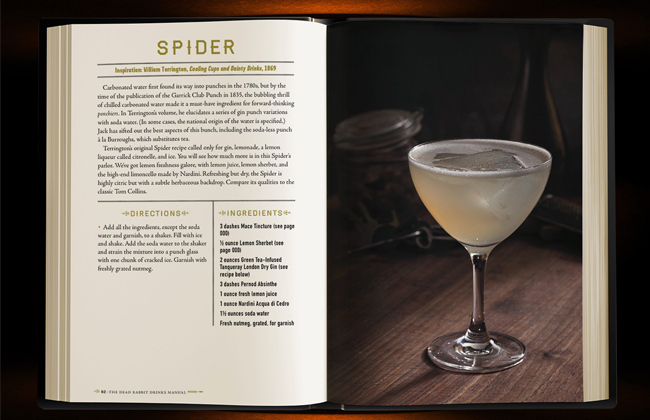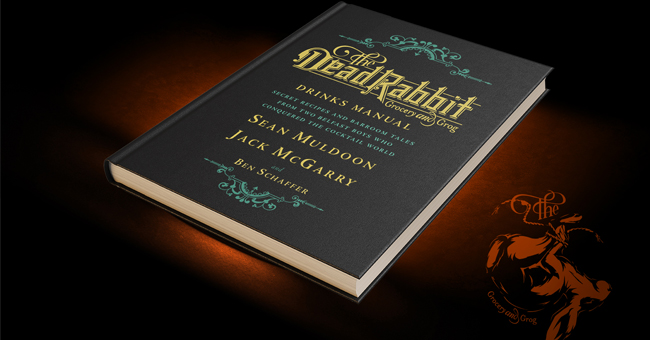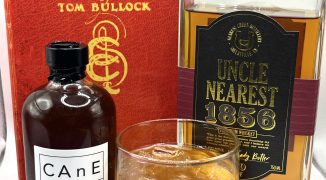Both cocktail bars and novels are often a journey for the imagination, ferrying readers and imbibers alike to distant eras and imagined lives using ambiance, lush prose and (of course) liquor. For a blink, you’re nestled into a world that’s far away from your own, allowed to play pretend for as long as the drink or chapter holds out.
Belfast-born barmen Sean Muldoon and Jack McGarry have spent their careers awash in just how appealing this type of velvety, full-sensory drinking experience can be. For Muldoon, the first iteration came when he fell head-over-heels for the gilded age of travel, specifically the hotel cocktail bar’s role in what was — at the time — a refined and extravagant experience. From this, the plush, classic cocktail-driven Merchant Hotel in Belfast was born. When wunderkind (and fellow Belfast boy) Jack McGarry arrived on the scene, the twosome quickly bonded over a shared intensity for building drinks and environs that transport drinkers through both artistry and service.
After ringing the bell for Merchant (which won world’s best cocktail bar in 2010), the pair found themselves skittering across the ocean to New York, where in 2013, they opened The Dead Rabbit Grocery and Grog.
Drawing inspiration from forgotten turn-of-the-century cocktails long buried in dusty attics and a jaunty “Gangs of New York” aesthetic, Dead Rabbit quickly distinguished itself as a place where the best of present-day drink craftsmanship paid homage to the taverns of yore. While a visit to Dead Rabbit is still a singular experience (and step back in time) unto itself, “The Dead Rabbit Drinks Manual” makes one feel as if 19th Century leader of the Dead Rabbit gang John “Old Smoke” Morrissey might just rise from the pages — cobbler in hand.
The book’s robber baron-style typography and appropriately turn-of-the-century knickerbockers feel is familiar in its similarity to the bar’s beloved and ever-rotating menu, retaining the same two-part cocktail, one-part history lesson quality in this larger volume. There’s a gritty, masculine glamour to the book’s design that bolsters the brooding romanticism of both the bar itself and the personal struggles of Muldoon and McGarry to make the space a reality. At the deft hands of their frequent collaborator Ben Schaffer, the book’s tone is convivial and cheeky, as if readers are gathered around a pint listening to the men swapping stories.
 Recipes range from punches, sours and fizzes to complex drinks involving eucalyptus tincture or freshly made pineapple cordial.
Recipes range from punches, sours and fizzes to complex drinks involving eucalyptus tincture or freshly made pineapple cordial.
McGarry and Muldoon’s commitment to legacy is evident in their drink-by-drink genuflect in front of each obscure cocktail that’s inspired their riff. The duo’s painstaking attention to detail shines in the subsequent blow-by-blow description of the process undertaken for retooling the motivating drink for The Dead Rabbit menu. This kind of nuanced, behind-the-curtain peek at the cocktail-building process adds a layer of intimacy to the book that feels bosomy and rare. There’s the Maiden’s Blush, a 1890s-era sour which has been reimagined as a more absinthe-forward beverage. The Dead Rabbit play on the Red Cup — a low-proof, stalwart drink of Oxford students throughout the 1800s — is freshened with cucumber and soda, but retains the “all-important orchard scent” through the addition of Calvados.
The book is also richly structured in a way that makes readers feel as if they’re steadily building up their knowledge of the antiquated drinking styles on which Dead Rabbit hangs its hat, beginning with the fairly familiar (punches, sours, fizzes) and growing into the likes of absinthe-based cocktails, flips and “invalid” drinks. Instead of rehashing nuggets of cocktail history already tread and retread by drinks scholars, the Dead Rabbit gives history a kiss on the cheek, then proudly peacocks their own potions.
When it comes to recipes, the complex reality of each Dead Rabbit drink is, of course, impossible to ignore. Is the average at-home cocktail maker going to keep eucalyptus tincture or freshly made pineapple cordial on hand? Probably not. (If you do, please invite me over — for a drink, or forever.) The cocktails feel appropriately aspirational, though, and the upcoming holiday season would be an ideal time to take a toe-dip in the waters with some of the book’s assuredly merrymaking punches or bishops.
Chalking up the origin story of Dead Rabbit as simply being a tale of Belfast boys-made-good glosses over the book’s larger lessons about the patience and doggedness of its creators. Sure, there are some unnecessarily staid, “Behind the Music”-style dramatic pauses sprinkled throughout, and a few of the more modern photos included are somewhat jarring. But the book is a testament to how the right kind of partnership can allow for the development of something wholly novel that wouldn’t have been possible without the push-and-pull of the individuals.
There’s something storybook-like about a trip to Dead Rabbit, as if one has tumbled into a place-out-of-time homage to the scrappy, liquor-fueled romance between Ireland and New York — past, present and future. Magically, a chronicling of how to recreate the bar’s finest libations only serves to enhance the mythology.





